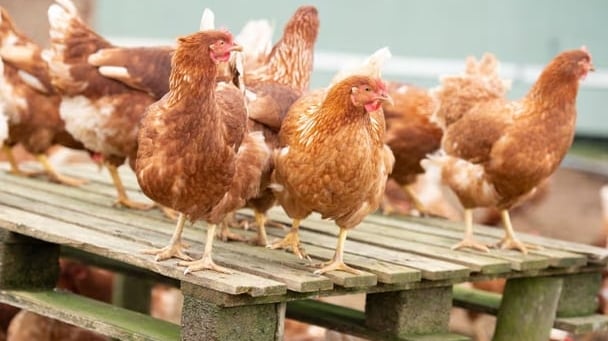May 16, 2025 | 04:15 GMT +7
May 16, 2025 | 04:15 GMT +7
Hotline: 0913.378.918
May 16, 2025 | 04:15 GMT +7
Hotline: 0913.378.918
Geopolitics have dominated traders’ thinking in recent months, with conflict in the Middle East joining uncertainty over Black Sea supplies as the Russia-Ukraine conflict rages on, clouding the overall supply and demand picture. Extreme weather, from drought to flooding, also has impacted grain trading, with several key production areas in the Northern Hemisphere having been recently affected.
The Food and Agriculture Organization (FAO) of the United Nations, in its Oct. 4 Food Price Index report, put grain prices in September 3% higher than their August level and 10.2% below the previous September.
“After declining for three consecutive months, global wheat prices increased in September, largely due to concerns over unfavorable weather conditions in some key exporters,” the Rome, Italy-based body said. “Excessively wet conditions in Canada and the European Union caused harvest delays in the former and led to a sizeable cut to the production forecast for the latter.”
However, the FAO added that “competitively priced supplies from the Black Sea region capped the increase in prices.”
The FAO also reported a month-on-month rise in world corn prices, “driven by low water levels on the Madeira River in Brazil and the Mississippi River in the United States, along with strong domestic demand in Brazil and a solid export pace in Argentina.”
Vegetable oil prices in September were up 4.6% compared with August, reaching their highest level since early 2023, according to the UN experts.
“The continued rise of the price index was driven by higher quotations across palm, soy, sunflower and rapeseed oils,” they noted.
Palm oil prices in September rose for the fourth straight month and were “underpinned mainly by concerns over lower-than-expected production that coincided with anticipated seasonal output declines in major Southeast Asian producing countries.”
Lower-than-expected oilseed crushing in the United States triggered a rebound in soy oil prices, while sunflower and rapeseed oil managed recoveries described by the FAO as “marginal,” which “were supported by a tightening supply outlook, following reduced outputs of respective oilseeds in the 2024-25 season.”
The International Grains Council (IGC), in its September Grain Market Report, noted that the overall level of global grains and oilseeds prices, as tracked in its Grains and Oilseeds Index, fell to a near four-year low in August, before managing a modest recovery.
It described wheat as “recently touching a three-month high, underscored by weather worries in some exporters, as well as broader geopolitical concerns.”
Corn was up on “light speculative and technical short covering at CME,” while “the upside was also tied to firmer US Gulf export premiums.”
Reduced wheat supplies
In the World Agricultural Supply and Demand Estimates (WASDE) report of Oct. 11, the USDA said the global wheat outlook for 2024-25 is for reduced supplies, consumption, and trade but slightly higher ending stocks.
“Supplies are reduced 1.9 million tonnes, to 1.06 billion, primarily on reduced production for the European Union, Russia, India and Brazil,” the USDA reported. “Declines in supplies were only partially offset by higher production for Ukraine and larger beginning stocks for Russia.”
Global consumption was reduced 2.4 million tonnes, to 802.5 million, with lower food, seed, and industrial use in India and Afghanistan, it added.
“World trade is decreased 700,000 tonnes, to 215.8 million, on reduced exports by the EU that are partly offset by an increase for Ukraine,” the USDA said. “Projected 2024-25 global ending stocks are raised 500,000 tonnes, to 257.7 million, but are still the lowest since 2015-16.”
The USDA also said that major global coarse grain trade changes for 2024-25 include lower corn exports for Ukraine and Russia with an increase for the United States.
“Maize (corn) imports are reduced for China and Iran but raised for Egypt and the Philippines,” the USDA said. “Foreign maize ending stocks are reduced slightly to 255.8 million tonnes, mostly reflecting a reduction for China that is partly offset by increases for Argentina and Mexico.”
The USDA put global corn ending stocks at 306.5 million tonnes, down 1.8 million from its earlier forecast and well below the 312.65 million reported for 2024-25.
The USDA’s Foreign Agricultural Service (FAS) in its Grain: World Markets and Trade publication, released on Oct. 11, said world wheat production in 2024-25, although it had been adjusted lower, is “still at a record, with the most significant downward revisions for the European Union, Russia, India and Brazil.”
“Global consumption is lowered slightly but remains a record,” the FAS said. “Consumption forecasts for India, Afghanistan and Ukraine are trimmed this month.”
Regarding trade, a large reduction to the European Union is only partially offset by an upward revision to Ukraine, the FAS noted, while “global stocks are revised slightly higher but remain at the lowest level since 2015-16.”
“Since the September WASDE report, global exporter quotes mostly firmed on winter wheat planting concerns in the Northern Hemisphere, especially with drought in Russia,” the FAS said. “EU quotes leapt $14/tonne on tightening supplies with lower production estimates. Russian quotes also jumped $14/tonne on dwindling supplies, while wet conditions hampered spring wheat harvest and dry conditions constrain 2025-26 winter wheat plantings.”
The USDA now forecasts (in the WASDE) total world wheat exports in 2024-25 at 215.82 million tonnes, down from 221.32 million in 2023-24. Russia is again set to be the biggest exporter at 48 million tonnes, down from 55.5 million the previous year. The EU’s exports, at 30 million tonnes, are now put 1.5 million below the USDA’s earlier figure, the result of lower-than-expected crops, notably in France. The previous year’s EU exports were 37.87 million. Canada is set to export 26 million tonnes, Australia 25 million and the United States 22.45 million, up from 19.24 million in 2023-24.
Ukraine’s wheat exports are now put at 16 million tonnes, with the USDA having added 1 million to its figure from a month earlier. The previous year’s exports from Ukraine were 18.58 million tonnes.
The IGC said in its September Grain Market Report “with wheat export prices lingering close to multi-year lows, down by more than 10% year on year, there is some downward risk to 2025-26 world area.”
“Winter planting has started in the Northern Hemisphere, with challenging early season conditions noted in a number of key producers,” the IGC said. “Dryness is a particular problem in southern Russia, with sowings to date slower compared to last year.
“In addition to weather worries, some producers are also reportedly concerned by ongoing profitability issues, which could contribute to a pullback in acreage. Low soil moisture also hampered fieldwork in Ukraine. Because of delays to rapeseed sowings, some growers may choose to plant additional land to wheat, but more rains are needed over the coming weeks.”
Corn output forecast lower
On coarse grains, the FAS reported that global corn production was forecast down in October as reductions for Egypt, the Philippines, Russia, and Ukraine more than offset an increase for India.
“Global trade is forecast down as lower exports for Argentina, Brazil, Russia and Ukraine more than offset an increase for the United States,” the FAS said.
Lower imports were due to cuts for China and Iran, which more than offset an increase in Egypt, it said.
Meanwhile, corn prices moved higher.
“Since the September WASDE, export bids for all major origins rose as further declines in Black Sea supplies and dryness during planting in South America supported slimmer supply expectations,” the FAS said. “US bids were up $6 per tonne, to $211. Pressure from the ongoing harvest continues to offset smaller supply expectations from the Sept. 1 NASS Grain Stocks report.
“Brazil bids were up $9 per tonne, to $213, while Argentina bids were up $20 per tonne, to $211. Low water levels in the Amazon and Parana Rivers are reducing throughput, supporting higher export bids.”
The FAS also noted a rise of $18 per tonne, to $220, for Ukrainian wheat “as competition for diminished Ukraine supplies is supporting higher bids.”
In the October WASDE report, the USDA forecasts world corn exports in 2024-25 at 190.50 million tonnes, down from 191.37 million forecast a month earlier, and compared with 195.75 million the year before. It put US corn exports in 2024-25 at 59.06 million tonnes, revised up from 58.42 million forecast earlier. That compares with 58.23 million in 2023-24.
Brazil’s exports were unrevised at 49 million tonnes in 2024-25, up from 46 million the year before. Argentina’s figure also was unrevised at 36 million tonnes, up from 32 million the previous year.
The most notable downward revision for corn exports was for Ukraine, with USDA’s most recent forecast at 24 million tonnes, down from 29.6 million a year ago.
The USDA’s latest figure for world oilseed production in 2024-25 was 687.32 million tonnes, slightly down on an earlier figure of 687.42 million. The previous year’s crop was 657.56 million. In the WASDE report, it said that US oilseeds output is forecast at 134.4 million tonnes, down 300,000 from last month with lower soybean, cottonseed, peanut, and sunflowerseed production partly offset by higher canola production.
The USDA’s figure for non-US 2024-25 oilseed production was raised 200,000 tonnes, to 552.9 million, “mainly on higher sunflowerseed and cottonseed production that is partly offset by lower rapeseed and soybean production.”
(WG)

(VAN) Japan's efforts to lower the price of rice through the release of its stockpile may finally be making some progress, albeit at a snail's pace.

(VAN) U.S. tariffs are not only a 'shock', but also an opportunity for Vietnamese businesses to renew their mindset toward comprehensive development.

(VAN) As Bac Giang lychee enters the harvest season, Minister Do Duc Duy expects that the fruit will contribute greatly to agricultural exports due to standardized production and deep processing.

(VAN) Consumers have shown a preference for free-range eggs, but those farming systems are more vulnerable to biosecurity risks like bird flu.
/2025/05/09/5701-1-184335_301.jpg)
(VAN) Vietnam’s eel exports nearly doubled thanks to a mud-free farming model, opening up new prospects while still facing numerous barriers related to international standards.

(VAN) Minister Do Duc Duy warned that if production is not professionalized and supply chains are not transparent, the U.S. market could become a growth bottleneck.

(VAN) Delegating surveillance responsibilities to local authorities is a cost-saving and efficiency-boosting measure that removes a key bottleneck for enterprises, according to Director General Duong Tat Thang.